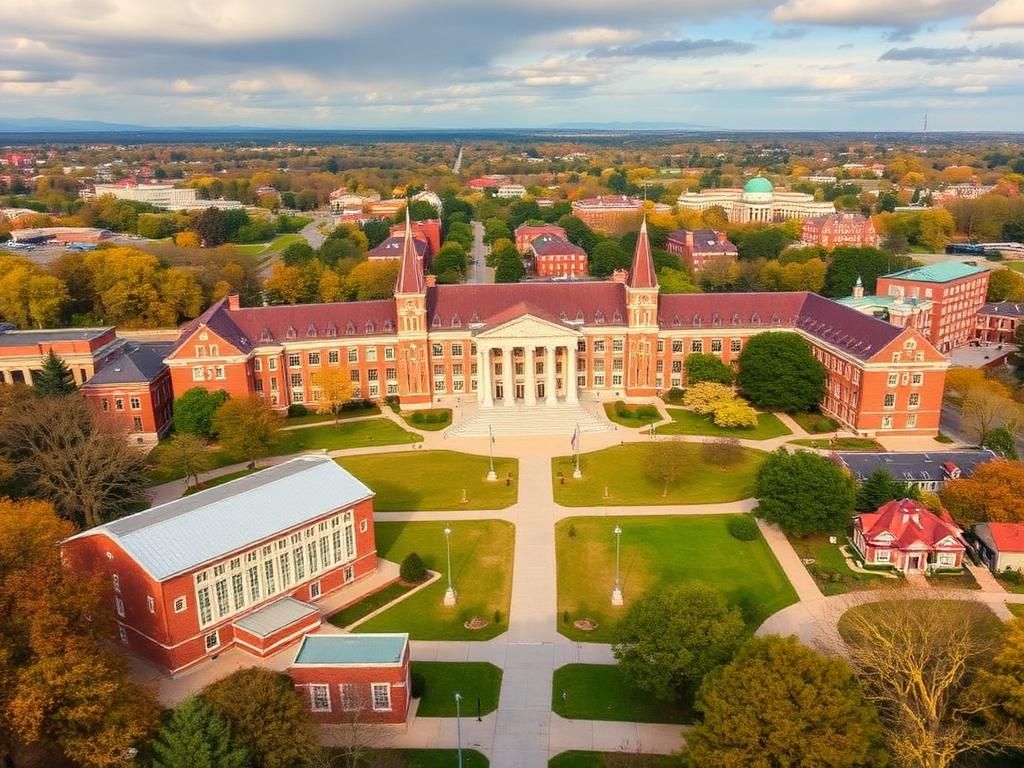In an ever-evolving global landscape, the traditional pathway of higher education in the United States is undergoing a significant transformation. No longer is a university degree solely about academic exploration or broad theoretical knowledge; increasingly, students, parents, and employers are demanding a tangible return on investment and a clear link between coursework and future career success. This shift has propelled “career-aligned education” to the forefront of trending discussions in U.S. universities in mid-2025. It’s a comprehensive term that encapsulates the growing emphasis on practical skills, industry relevance, and direct pathways to employment.
As tuition costs continue to rise and the job market becomes more competitive, prospective students are more discerning than ever before. They are not just seeking a degree; they are seeking a professional launchpad. This strong consumer-driven demand is reshaping curriculum development, prompting institutions to innovate and collaborate with industries to ensure their graduates are workforce-ready from day one. This trend is a direct response to a fundamental question from students and their families: “What can this degree do for my future career?”
Redefining “Value”: Skills Over Pure Theory
The core of career-aligned education lies in its emphasis on skill-based learning. While foundational knowledge and critical thinking remain crucial, there’s a heightened focus on equipping students with the specific, in-demand competencies that employers seek. This isn’t about abandoning the liberal arts, but rather integrating practical applicability throughout the curriculum.
- Practical Application: Universities are moving beyond purely theoretical frameworks to incorporate more hands-on projects, simulations, and real-world case studies into their programs. Students are actively engaged in problem-solving scenarios that mirror challenges they’ll face in their chosen professions, often utilizing the same tools and software used in industry.
- Experiential Learning: Internships, co-op programs, capstone projects with industry partners, and clinical rotations are no longer optional extras but integral components of many degree pathways. These experiences provide invaluable practical exposure, networking opportunities, and often lead directly to job offers upon graduation, shortening the transition from campus to career.
- Interdisciplinary Approaches: The modern workforce rarely operates in silos. Complex global challenges and rapidly evolving industries necessitate professionals with diverse skill sets. Universities are increasingly breaking down traditional departmental barriers to create interdisciplinary majors and minors that combine fields like computer science with business, healthcare with data analytics, or environmental science with policy. This holistic approach prepares graduates for multifaceted roles that demand knowledge from multiple domains.
The Influence of Emerging Technologies: AI and Data
The rapid advancement of technologies, particularly Artificial Intelligence (AI) and data science, is profoundly impacting what and how students are studying. Universities are scrambling to integrate these crucial areas across various disciplines, recognizing that AI literacy is becoming as fundamental as digital literacy.
- AI Literacy Across Majors: It’s not just computer science majors who need to understand AI. Business students need to grasp AI’s role in strategy and marketing automation, healthcare students need to comprehend AI in diagnostics and patient care, and humanities students need to consider its ethical and societal implications. Understanding how to interact with, leverage, and critically assess AI tools is becoming a universal skill, enabling graduates to adapt to the AI-driven workplace.
- Data Analytics as a Core Competency: The ability to collect, interpret, and leverage data is paramount in almost every industry. Programs in business, social sciences, and even arts are incorporating modules on data analytics to ensure graduates can make data-driven decisions, understand metrics, and contribute to evidence-based strategies.
- Cybersecurity Demand: With the increasing digitalization of society and the growing threat of cyberattacks, the need for cybersecurity professionals is skyrocketing. Universities are launching and expanding dedicated cybersecurity programs and certifications to meet this critical workforce demand, often collaborating with government agencies and private sector security firms.
Addressing the “Return on Investment” Question
For many families, the spiraling cost of higher education is a significant concern, making the “return on investment” (ROI) a central factor in their decision-making. Career-aligned education directly addresses this by offering more transparent and accelerated pathways to employment.
- Clear Career Pathways: Programs are designed with clearer ties to specific job titles and industries, allowing students to visualize their post-graduation trajectory and the potential earning power associated with their chosen field.
- Accelerated Degrees and Microcredentials: To reduce the time and cost, some institutions are offering accelerated bachelor’s or master’s programs, as well as an explosion of microcredentials (digital badges, specialized certificates) that focus on niche, high-demand skills. These offer quicker entry into the workforce, or valuable upskilling opportunities for existing professionals looking to remain competitive.
- Employer Partnerships: Stronger ties with corporations and organizations ensure that curricula remain relevant to current industry needs, often leading to direct recruitment pipelines for graduates and even jointly developed courses that meet specific industry standards.
Challenges and Future Outlook
While career-aligned education offers immense benefits, it also presents significant challenges for universities. These include the need for continuous curriculum updates in rapidly changing fields, attracting and retaining faculty with relevant industry experience, and finding the delicate balance between vocational training and maintaining the broad intellectual development traditionally associated with a liberal arts education.
Nevertheless, the trend is clear: U.S. universities are increasingly adapting to produce graduates who are not just knowledgeable, but highly employable and resilient to future economic shifts. As the demands of the 21st-century workforce continue to evolve, career-aligned education will remain a dominant and essential focus, shaping the future of higher learning in the United States and ensuring its continued relevance in a dynamic global economy.
